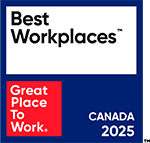
Interview - Gail Lord
“Making the world a better place through ‘Soft Power’” (Part 1)
July 8, 2021
Together with her late husband Barry Lord, Gail Lord has turned museum planning into a discipline by creating an international consultancy practice. Now she wants museums to help cities apply soft power so they can yield influence on the global stage.
Lord Cultural Resources has established itself as a leader in the global museum sector, estimated to be worth around $50 billion, where Gail Lord is a name that resonates.
As co-founder and president of Lord Cultural Resources, the world’s leading cultural planning firm, Gail is a powerful modernizer in the fields of museums, creative economy and cultural districts.
She’s known as a champion of soft power — a method of influencing through negotiation, persuasion and agenda setting — which Gail believes can assist cities in gaining clout to address some of the most important issues of our time.
Gail is also a tireless advocate for a stronger connection between cities and museums as a means of delivering tangible public benefits. She urges cities to embrace museums as places that do more than captivate visitors – they increase quality of life, education and real estate value, while attracting investment, tourists and creative workers.
She has authored six museum planning manuals and several books including “Cities, Museums and Soft Power,” that have been used as guiding principles for over 2,600 projects completed by Lord Cultural Resources across 57 countries.
In 2017, Gail was honoured as a Member of the Order of Canada for her contribution to museum planning and management, and her work in supporting the cultural sector in Canada and abroad. In 2014, the Government of France appointed her Officer in the Order of Arts and Letters for her contributions to the arts.
Level5 Strategy’s Managing Partner Hua Yu interviewed Gail to gain insights into the museum sector and learn about her fascinating career journey.

Hua: You are one of the world’s foremost museum planners. Tell us about your career highlights and stories of building the world’s leading museum and cultural planning firm.
Gail: It started 40 years ago when my late husband Barry Lord and I were working for the government in Ottawa. We both had deep cultural backgrounds – Barry had experience as a curator in a number of museums and I had been an art critic for The Toronto Star, and had taught art history at Ryerson. One day, Barry came home from work and said, “You know, I think there’s a need in the world for museum planning. It doesn’t exist, but there is a need.” We had two young children at the time so I was busy cooking dinner after work and I just said, “Yes dear,” not realizing what I was saying “Yes dear” to. Barry had a clear idea that this was something that we could do together and that we should do. He set about creating a framework and we left Ottawa to live in a small town outside Hamilton. That’s where we started the company. Barry was able to continue working in the sector and I started building the company. I remember that some people thought we were crazy while others thought we were brilliant. But we wanted to do what we liked and we wanted to work together.
The first project that we undertook was a tiny museum Musée Acadien/Acadian Museum in Prince Edward Island (PEI). The museum wanted to reinvent itself because people usually think about the Acadian population as being principally in Nova Scotia. But when Acadians were dispersed, they were dispersed everywhere, including to very poorest land in PEI. Gradually, our work spread across the country, especially in the small communities. This is very important because it has always been part of our philosophy that big museums learn from small as well as the more usual small learning from big. A small museum is going to be really close to its population and reliant on local people, including local businesses. It also has a capacity to change quickly. Larger institutions are much more complex and they take a bigger shift to turn around. So we learned a lot from those early days and we worked in every Canadian province and territory including the farthest regions in the north. That was a very good background for what we eventually did, which included working with tiny communities internationally and some of the biggest institutions in the world. Without that background, Lord Cultural Resources wouldn’t be the inclusive company that it is today.
Another thing that started us on our journey was the creation of a book on museum planning. This project came from Barry’s work for the then National Museums Corporation. When we were writing the book, we thought that Canadians were probably the only people in the world who didn’t know how to plan museums… Americans must know, the British, the French etc. – that was our assumption. But when the book came out, and started receiving orders from all over the world, we realized that Canadians weren’t the only ones who didn’t know. Nobody knew. That’s where the concept of the company really took root, as something that there was a need for.

Co-authors Gail Lord and Ngaire Blankenberg at the launch of the “Cities, Museums and Soft Power”, Gardiner Museum, Toronto, 2015
Hua: You have been championing the concept of “soft power” for a long time. What is the definition of “soft power?” What is the role of modern museums and how can they provide tangible public benefits?
Gail: Soft power as an idea was coined by Harvard professor, Joseph Nye, in the early 1990s. He used it to describe a new approach to international relations which creates power through persuasion and culture rather than force. In 2014, my co-author Ngaire Blankenberg and I applied the concept of soft power to museums and cities. Artifacts have always been used in diplomacy as gift exchanges between royal families and governments, so that type of diplomatic culture was nothing new. But what happened between 1991 and 2015 was that cities became new power houses in the world economy. In 2014, cities were already accounting for more than half of the world’s population, while in advanced economies cities were accounting for 80% of GDP. Cities don’t have control over the economy and they have no way of exercising hard power. When we studied cities, we realized that they were exercising soft power through scores of organizations. These were civil society organizations that addressed such challenges as immigration, climate change and refugees. So, cities had already begun to flex their soft power beyond local issues and into the international arena.
But what about museums? Museums occupy prominent places and spaces in cities, yet they were largely absent from those big urban issues—and so our book “Cities, Museums and Soft Power” was born and published in 2015. Our thesis stood the test of time because many museums were keen to exercise their soft power but didn’t know how. The book helped to build confidence in new roles for museums. Meanwhile museums had changed from government institutions to more independent civil society ones. The events of 2018 caused a major re-think about the role of museums in society which is continuing.

Gail Lord speaking about complex issues, and whether to talk or keep silence in the museum at the Museum Guide Forum, VDNKh, Moscow, Russia, 2018

Gail Lord giving a keynote address on museums and soft power, Museum of Tolerance, Los Angeles, 2017
Hua: What is the relationship between museums and people?
Gail: When we formed the company 40 years ago the really big message that we had was that museums are for people. Back then, museums were for collectors, specialists and socialites. They weren’t conceived as places that should be accessible and welcoming to everyone. Museums were also thought of as judgmental organizations that were creating a hegemonic environment in which some cultures are superior and others inferior. These deep-seated colonial perceptions took years to establish and couldn’t be changed easily.
For this reason, museums are uncomfortable places for some people and they don’t want to enter. For others, museums are places where they can go to explore new ideas. Then, there are people for whom museums are about memory; and, this can create the impression that museums are only for elders. This is why museums need to make sure that the voices of all people are integrated and heard. The challenge for museums is learning what people think about them and what actions museum staff can take to be meaningful and relevant to the diversity of people.
Hua: What are some of the leading trends of the museum sector? How has COVID-19 changed and evolved the sector?
Gail: COVID has impacted every sector of the economy by accelerating trends that were already there. The trends for museums included appealing to the broader audience and being more relevant to diverse communities. Even the degree to which museums deliver their content online also precedes COVID; but what the pandemic has done is to speed it up exponentially. This is going to be a very good result for museums. Data tells us that the per cent of first-time museum visitors – a very important metric – online has increased during COVID. After all, it’s logical – people are at home and they’re looking for engaging things to do. Museums have pivoted quickly to the online delivery of services, including gift shop sales, programs and tours that they could charge for if they were interesting enough. Museums were able to offer a number of free services as well, so the result is going to be a much more vital museum sector in the next 20 years. It’s going to be a hybrid of online and on-site visits, which will result in a huge increase in the number of people who are engaged in museums and experience the soft power of museums. While COVID has been a tragedy, museums can emerge as stronger institutions.
It’s important to understand that museums have been around for only 200 years. But as institutions, they’ve always been strong in their mode of communication. Museums are known for their collections but they are also incredibly effective communicators. Museums have always been early adapters of communication technology.
Stay tuned for Part 2 of the interview with Gail Lord, where she discusses her proudest achievements, the importance of museum branding and increasing the number of women in the museum sector.



